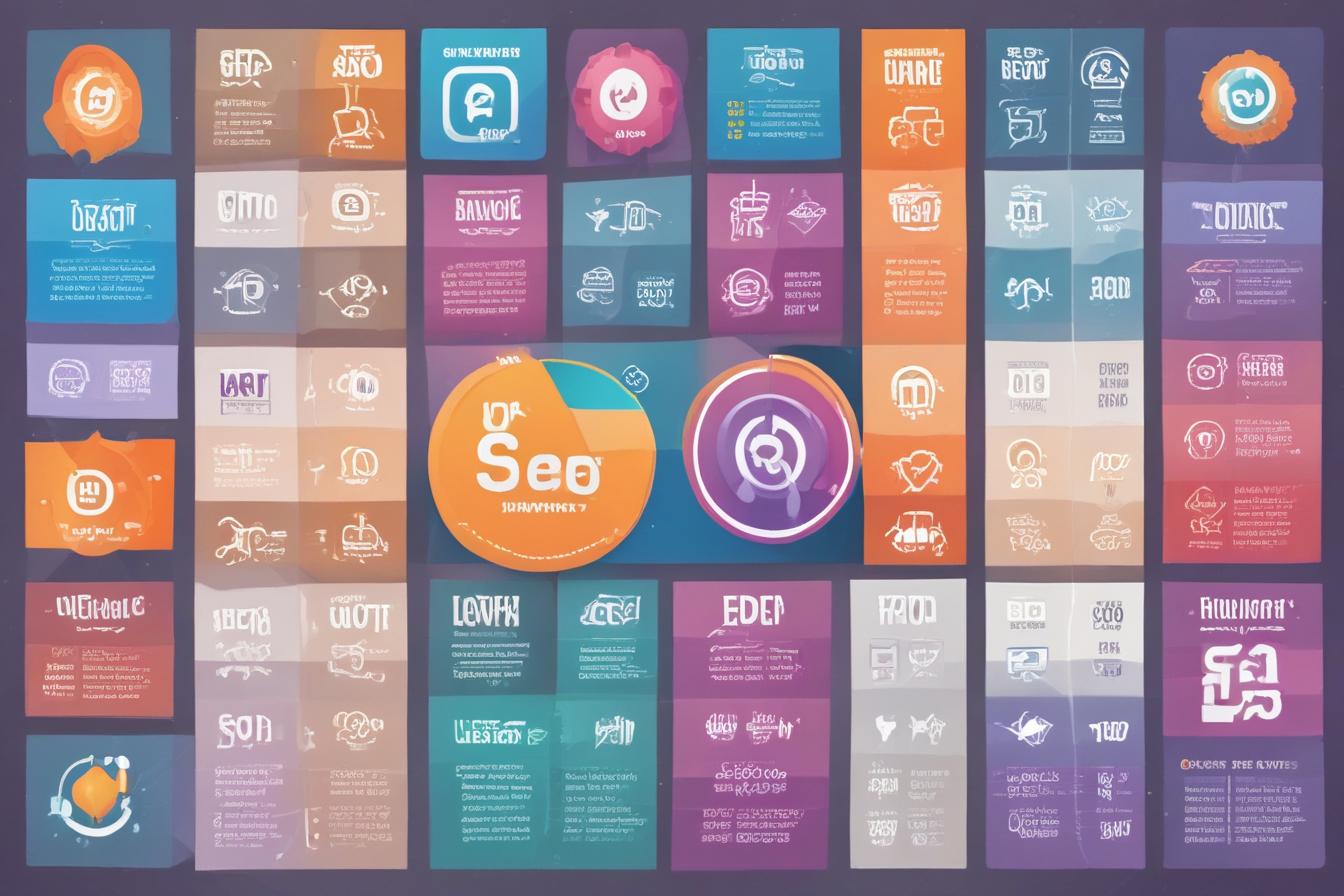What is Concurrent SEO Analysis?
In the ever-evolving digital landscape, search engine optimization (SEO) has become a crucial element for businesses to thrive online. As competition intensifies, staying ahead of the curve requires a comprehensive understanding of your competitors’ strategies. Concurrent SEO analysis, also known as competitor SEO analysis, is the practice of systematically evaluating the SEO tactics and performance of your competitors to uncover insights that can inform and enhance your own strategy.
Understanding the Competitive Landscape
Concurrent SEO analysis involves identifying your key competitors, analyzing their website structure, content strategy, backlink profile, and overall search engine visibility. By examining their strengths and weaknesses, you can pinpoint opportunities to differentiate your approach and capitalize on areas where your competitors may be falling short.
Benchmarking and Continuous Improvement
This process also enables you to benchmark your performance against industry leaders and establish realistic goals for improvement. By continuously monitoring your competitors’ tactics and adapting your strategy accordingly, you can stay agile and maintain a competitive edge in the ever-changing SEO landscape.

The Benefits of Analyzing Competitor SEO Strategies
Conducting a thorough concurrent SEO analysis can yield numerous benefits for your business, including:
Identifying Keyword Opportunities
By analyzing your competitors’ keyword targeting, you can uncover high-value, low-competition keywords that they may have overlooked. Incorporating these keywords into your content strategy can help you capture untapped search traffic and gain a competitive advantage.
Uncovering Content Gaps
Evaluating your competitors’ content can reveal gaps or topics that they have yet to cover comprehensively. By creating high-quality content to fill these gaps, you can position your website as a more authoritative and valuable resource for your target audience.
Improving User Experience
Analyzing your competitors’ website structure, navigation, and user experience can provide insights into areas where you can enhance your own site’s usability and user-friendliness. By addressing these areas, you can improve user engagement, reduce bounce rates, and ultimately increase conversions.

How to Conduct a Comprehensive Concurrent SEO Analysis
Effective concurrent SEO analysis requires a systematic approach and the right tools. Here are the key steps to follow:
Identify Your Competitors
Begin by listing your direct competitors, as well as indirect competitors who may be targeting similar keywords or audiences. Consider factors such as market share, search engine visibility, and industry reputation.
Analyze Keyword Targeting
Use keyword research tools to identify the keywords your competitors are targeting, their rankings for those keywords, and the corresponding search volumes. Look for high-value, low-competition opportunities to incorporate into your own strategy.
Evaluate Content Quality and Structure
Assess your competitors’ content in terms of quality, depth, and structure. Analyze factors such as readability, multimedia integration, internal linking, and overall content organization. Identify areas where you can create more comprehensive and engaging content.
Assess Technical SEO Factors
Investigate your competitors’ website architecture, page load speeds, mobile-friendliness, and other technical SEO elements. These factors can significantly impact search engine crawlability and user experience.
Analyze Backlink Profiles
Examine the quality and quantity of your competitors’ backlink profiles. Look for opportunities to acquire high-quality backlinks from authoritative sources, as well as areas where you can outperform your competitors in terms of link building.

Tools and Resources for Effective SEO Competitor Analysis
To streamline the process of concurrent SEO analysis, leverage the following tools and resources:
- Keyword research tools like Ahrefs, SEMrush, and Google Keyword Planner can provide valuable insights into your competitors’ keyword targeting and search volumes.
- SEO audit tools such as Screaming Frog and DeepCrawl can help you evaluate your competitors’ website architecture, technical SEO factors, and content structure.
- Backlink analysis tools like Ahrefs, Majestic, and Moz can reveal your competitors’ backlink profiles, allowing you to identify link building opportunities.
- ContentScale.fr is an AI-powered tool that can generate SEO-optimized content at scale, saving you time and money while helping you outpace your competitors.
By leveraging these tools, you can streamline the process of gathering and analyzing data, allowing you to focus on developing and implementing a winning SEO strategy.
Integrating Competitor Insights into Your SEO Strategy
Once you’ve gathered and analyzed data from your concurrent SEO analysis, it’s time to integrate these insights into your overall SEO strategy:
Content Creation and Optimization
Develop a content plan that addresses the gaps and opportunities identified during your analysis. Utilize ContentScale.fr to generate high-quality, SEO-optimized content at scale, allowing you to quickly and cost-effectively outpace your competitors.
Keyword Targeting and On-Page Optimization
Incorporate the high-value, low-competition keywords you’ve uncovered into your website’s content, meta tags, and other on-page elements. Ensure your pages are optimized for these keywords to improve search visibility and drive targeted traffic.
Link Building and Off-Page Optimization
Develop a link building strategy that focuses on acquiring high-quality backlinks from authoritative sources. Leverage your competitors’ backlink profiles to identify potential link opportunities, while also exploring new avenues for link acquisition.
Technical SEO Improvements
Address any technical SEO issues identified during your analysis, such as website architecture, page load speeds, and mobile-friendliness. Continuously monitor and optimize these factors to ensure a seamless user experience and improved search engine crawlability.

Case Studies: Companies That Dominated With Concurrent SEO
Numerous businesses have leveraged the power of concurrent SEO analysis to gain a competitive edge and dominate their respective industries. Here are a few inspiring case studies:
Airbnb’s Content Disruption Strategy
Airbnb recognized the importance of creating high-quality, SEO-optimized content to outrank competitors like Booking.com and Expedia. By analyzing their competitors’ content strategies, they identified gaps and opportunities to create engaging, travel-focused content. Leveraging ContentScale.fr, they were able to generate large volumes of SEO-optimized articles at a fraction of the cost, allowing them to quickly establish themselves as a leading authority in the travel industry.
Zappos’ Technical SEO Overhaul
Zappos, the online shoe and clothing retailer, conducted a comprehensive concurrent SEO analysis and discovered that their website suffered from numerous technical issues, including slow page load times and poor mobile responsiveness. By addressing these issues and optimizing their website’s architecture, they experienced a significant boost in search engine visibility and organic traffic, ultimately outpacing their competitors in the highly competitive e-commerce space.
HubSpot’s Link Building Prowess
HubSpot, a leading provider of marketing and sales software, recognized the importance of acquiring high-quality backlinks to improve their search engine rankings. By analyzing their competitors’ backlink profiles, they identified authoritative sources and developed a strategic link building campaign. As a result, HubSpot’s website now boasts a robust backlink profile, contributing to their dominance in the inbound marketing industry.
Frequently Asked Questions About Concurrent SEO Analysis
Why is concurrent SEO analysis important?
Concurrent SEO analysis is crucial for understanding your competitors’ strategies, identifying opportunities for differentiation, and gaining a competitive advantage in the search engine landscape. By continuously monitoring and adapting to your competitors’ tactics, you can stay ahead of the curve and maximize your search engine visibility.
How often should I conduct a concurrent SEO analysis?
It’s recommended to conduct a comprehensive concurrent SEO analysis on a regular basis, typically every 3-6 months. However, monitoring your competitors’ activities and adjusting your strategy as needed should be an ongoing process.
What tools are essential for effective concurrent SEO analysis?
Key tools for concurrent SEO analysis include keyword research tools (e.g., Ahrefs, SEMrush), SEO audit tools (e.g., Screaming Frog, DeepCrawl), backlink analysis tools (e.g., Ahrefs, Majestic, Moz), and AI-powered content generation tools like ContentScale.fr.
Can concurrent SEO analysis help with content creation?
Absolutely! By identifying content gaps and opportunities during your analysis, you can develop a strategic content plan to fill those gaps and outperform your competitors. Additionally, leveraging ContentScale.fr allows you to generate high-quality, SEO-optimized content at scale, giving you a significant advantage in terms of content volume and velocity.
How can I integrate competitor insights into my SEO strategy?
Integrate competitor insights by developing a comprehensive SEO strategy that addresses content creation and optimization, keyword targeting, link building, and technical SEO improvements. Continuously monitor and adjust your strategy based on your competitors’ activities, leveraging tools like ContentScale.fr to maintain a competitive edge.
In conclusion, concurrent SEO analysis is a powerful tool for understanding your competitors’ strategies, identifying opportunities, and developing a comprehensive SEO plan to outperform them. By leveraging the right tools, including ContentScale.fr for AI-powered content generation, you can streamline the process, save time and money, and gain a significant advantage in the ever-evolving search landscape.
Take action today and start analyzing your competitors’ SEO strategies. Implement the insights gained through concurrent SEO analysis, and watch your search engine rankings and organic traffic soar. Visit ContentScale.fr to learn more about how their AI-powered content generation can accelerate your SEO success.
